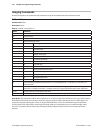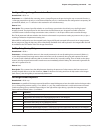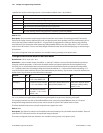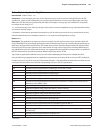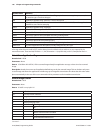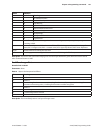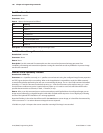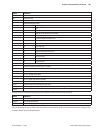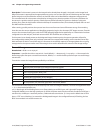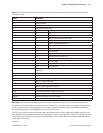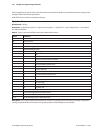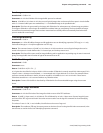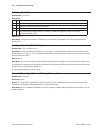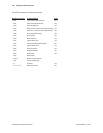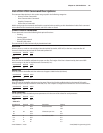
Chapter 5: Programming commands140
A776 (B780) Programming Guide A776-PG00001 C 12/09
Description: If a document is present in the imager that has already been imaged, it is ejected out the imager back.
When a document is presented at the appropriate entry point, scan and save the front and back image into the image
buer. Assign the next free FileIndex numbers so that both sides can be identied for subsequent image retrieval.
This command waits for a document to be placed at an image source insertion position. A front entry will leave the
document in a position ready for ejection; a back slip entry will be left ready for ejection or backup to a slip print
position. Entry from the slip position will wait and clamp an inserted document (if not already clamped) and scan and
also MICR read the document.
After scanning, possibly reorient then process into the current format and save all rmware set tags. If transmitting
then also save the current application set identifying properties (tags) to the document TIFF image structure. Transmit
status to the command issuing port, with the TIFF le optionally appended as specied by m. If transmission has been
congured to use the 2nd port, then both status and the TIFF le will be sent to that port.
If a document is not already present at the designated imager insertion point, the capture operation will wait for
the congured slip waiting time (only real-time commands are accepted while waiting; use the standard Cancel Slip
Wait command 10 05 03 to cancel this wait). If a document is successfully captured, its storage updates the on-going
average size for the capture modes used. This average is then used to determine the amount of free image storage.
Transmit Image
Hexadecimal: 1D B9 s t m nL nH pL pH
Parameters: s species the sides to transmit: 0 = both (default), 1 = bottom only, 2 = top only. t = 0 do not mark the
buer image space free upon successful transmission, default; t = 1 mark the buer space free upon successful image
transmission.
Transmission creates the image format specied by m as follows:
Value Denition
0 Reserved, value is treated as no change from previous format
1 LZW (lossless, also used in GIF) compressed grayscale TIFF
2 CCITT T.6 compression (binary) TIFF
3 Reserved for JPEG (lossy)
4 Binarized, No Compression (in TIFF Wrapper)
6 16 level (4 bit) TIFF packed bytes format (1/2 size of raw, ignores R parameter drop bits)
7 No compression, raw (256 level) grayscale in TIFF format, default
n is the FileIndex of the image to be returned (if only one of the two images is desired, it corrects the supplied le index
+- 1). n = 0 transmits the latest scan.
p is a 2-byte length of the blocking factor to use if transmitting on an RS232 port, and is ignored if imaging is
congured (default) to use the high speed port. On RS232 the printer sends P bytes and waits for either an ACK byte =
transmit next, a NAK byte = retransmit previous, CAN terminates transmission. p = 0 says use the default size of 1024
bytes, = FFFF use no blocking (i.e. transmit the M designated images in the congured formats). If blocking, the last
block is transmitted at its actual remnant size.



